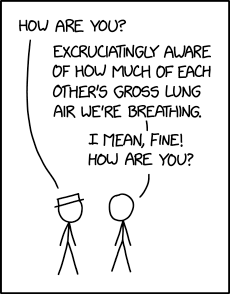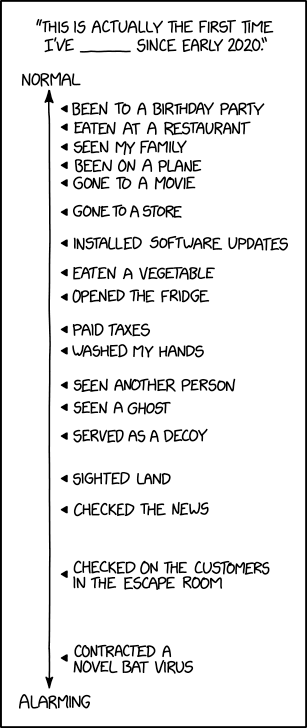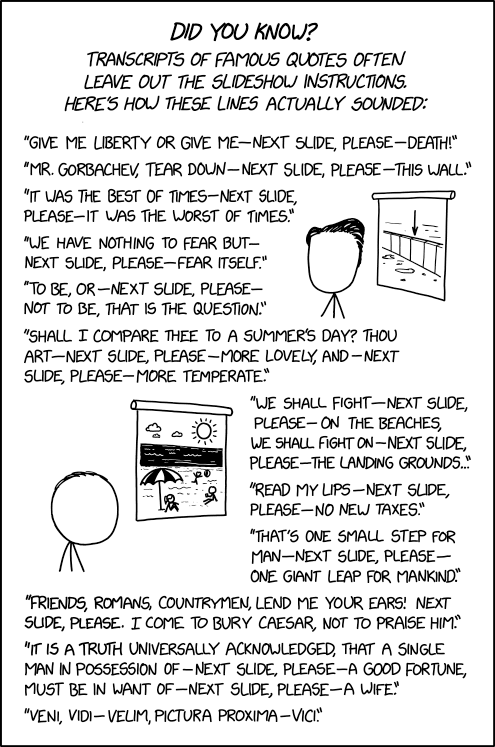The Town of Calamity, The D&RGW RR Warehouse Row and Historical Miniature Gaming
Quotes
Wednesday, June 30, 2021
Friday, June 25, 2021
Game Design Thoughts - 18xx Games - Thoughts on a Colorado board design
In most of the 18xx games that I have played terrain is not usually an issue. There will be a number of mountain hexes that will require some payment of funds and the occasional open ground tile that has a price associated with it (I'm guessing some type of terrain that needs more grading, cuts, fills and/or bridges). For example, the original 1830 board has 11 hexes with mountains and 8 hexes with water obstacles that require payment to lay the initial tile on the hex out of a total of 75 hexes where tiles can be placed. That's about 25% of the board with features that require the corporation to pay for the initial tile placement. After a tile has been placed upgrades to green and russet tiles are free.
 |
| On the original version mountains are represented by the triangles and the water ways by the dark blue. |
The ratio of tiles requiring a payment as opposed to those that are free is going to reverse for an 18xx game set in Colorado. Without really pulling out a map I'm guessing that 75% would require payment and 25% would be free. The question then becomes how do you handle the mountain passes or should I just ignore their presence. There is certainly going to be a certain number of hexes that are completely impassible, which created a "pass" rush, as the major players competed for the best passes to get across the mountains. I think I could safely ignore some of the lower passes like Raton and Monument Hill and those would just be represented as a charge to place the tile. And maybe that's all that really needs to be done. Maybe a note on the map to indicate elevation and that would be it.
It does mean that the railroads are going to be more strapped for cash than in other 18xx games which makes the concept of the refurbished trains all that more appealing.
Thursday, June 24, 2021
Game Design Thoughts - 18xx Games - Thoughts on Trains
 |
| Avalon Hills' 1830 The original box |
 |
| The original 1830 board |
I am a board game fan of long standing and my favorite genre are railroad games (well and Clue) of just about any type. Of those I would say that the Empire Builder series and the 18xx series are my favorites followed closely by the Ticket to Ride series. The first of the 18xx games was 1829 which I think was first published in 1974 by Francis Tresham. There would eventually be two versions 1829; the southern board and the northern board. I did not get involved with this style of game until 1830 was published by Avalon Hill in 1986, also designed by Tresham but heavily influenced by American players and while 1829 and 1930 share some common characteristics, 1830 has a more cut-throat feel to it in the stock market design. My first wife's father, Colin Barnhorst, was one of the early 1829 players in the US and always had a keen interest in the changes made by Tresham (I think there were 7 small expansions to 1829 eventually). Eventually this interest would move to game design and in 1996 worked on our own 18xx designs; 1869 The Golden Spike, 18GM Gamemaker and a version of Japan (which seems to have disappeared into the depths of Colin's computer). We self published the first two titles and Japan was never published, even the copy we were playing seems to have disappeared.
The basic concepts of players "floating" companies and operating those companies to generate the most wealth at the end of the game is pretty basic amongst the entire genre. There are other common concepts. Once "floated" Companies buy and "run" trains. Those trains run routes which are created by placing track tiles between cities allowing the trains to run the routes built between the company's stations and those cities. A player can then choose to either pay dividends to players that own stock in the company (and thereby increase the share value) or hold the revenue and put it in the company's treasury (and thereby decreasing the share value).
Companies need money to buy trains, pay for the placement of station tokens and sometimes to pay to lay a track tile (usually in a mountainous area). The company's initial funding comes from stock sales when 60% of a company's stock has been purchased then the company has floated and the money used to buy the shares goes into the company's treasury as its starting capital. Trains are the driving force behind creating revenues for companies and players. A company without at least one train cannot generate revenue which will drop the value of the company's stock value as well as the player's wealth. If a company does not have a train it must purchase one, at least, from its own treasury. If it does not have enough money to purchase a train then the owner (i.e. the controlling player) must add his own money to the treasury until a train can be purchased. Forcing a player to use their own funds to buy a train is a pretty standard tactic either to reduce the player's wealth or even to force a bankruptcy which in 1830, and in most of 18xx games, ends the game and the players total up their wealth to determine the winner.
In their most basic form trains have two characteristics; the number of stations they can run to and the cost to purchase. In some 18xx versions the later trains are sometimes marked as permanent, the "rusting of older trains is another pretty standard concept of the genre. The smallest train and the only one available at the beginning of the game is the "2" train. The 2 indicates that the train can run to two stations, one of which must have a station marker from its company on it. Simply add up the value of the run and decide to hold or pay dividends. If the company pays dividends each players receives 10% for each share of stock that they own. If the company holds it then the full amount is paid into its treasury. In 1830 there are 2, 3, 4, 5, 6, (I'm looking at the most current printing of 1830 by Lookout Games, in which 7s are included for the expanded version but are not used in the "classic" version of the game so for our purposes there are no 7 trains) and "U" trains. The "U" train is a diesel and has unlimited range. There are a couple of restrictions; as stated a train's route must begin from a tile that holds one of the company's station markers, it cannot use the same track twice (i.e. if you have two trains they may share the station marker but they cannot use the same route) and it while its end point can be a station with another company's station marker it cannot pass through that station (it will be the end point of that train's run). The cost to buy it is simply printed on the card, whether it is a permanent train or not is sometimes printed there but there is always a chart that show when a train "rusts" out.
In 1830 the first permanent train is the 5, however, a player can not just decide to buy a "5" train. All of the trains before it must be purchase first. This is a another basic concept. All of the 2s must be purchased before the first 3 train can be purchased.. All the 3 trains must be purchased before the first 4 train is available. Upon the purchase of the first 4 train all of the 2 trains are obsolete or "rusted" out and are removed from the game. There are lot of consequences about to ensue when that 4 is purchased as some companies may suddenly be without a train. A player, and hence companies they control, needs be in a position to acquire a permanent train or in a position to "dump" a cash strapped railroad with no trains on someone else (which leads us back to the stock market and all of the manipulation that can happen there). This "run" on trains in 1830 can be devastating if a player is not prepared for it and it can happen quite quickly. There are other 18xx games where this train run is more manageable.
That was a pretty quick introduction some of the basic 18xx concepts. The one I'm beginning to question is the concept of "rusting" or obsoleting trains. Is it really necessary to "rust" trains to drive the game forward? Over the last month or so I have been dabbling on a concept for an 18xx game based on Colorado, I'm not sure there is a gamer there yet but the research I have done has stirred up the train question in my mind.
 |
| The cover from the Mayfair Games edition of 1830. Note the 18XX label in the lower right hand corner |
 |
| The components to the Mayfair 1830 edition. The calculator is not included, or really even necessary. |
 |
| An 1830 game in progress. |
Let's look at a little historical research around the Denver & Rio Grande Railroad to see if there is any real historical validity, at least for a Colorado game, to the rusting train concept. Again rusting is the concept of trains going obsolete. Let's see what the D&RG thinks about that concept. The information here is just for the standard gauge portion of the line.
The D&RG started in 1881 and initially laid rails south from Denver towards Colorado City (which if I remember correctly also helped finance the D&RG), only to stop short of that destination and build its own town of Colorado Springs (something that would become a pretty standard tactic for General Palmer and the D&RG). In the beginning it is equipped with 4-6-0 Ten Wheelers and it continued to purchase Ten Wheelers through 1908 (27 year time period). The original batch is removed or scrapped in 1906, but the rest remain in service until 1924 and some of the last Ten Wheelers purchased last until 1948 (either on the D&RG or sold off to other railroads). So what might start as a 2 train in 1881 continues in service for 60+ years. Let's also keep in mind that the D&RG would move completely to diesel locomotives in 1956 at which point it scraps or sells off all of its steam locomotives.
In concepts of service that means the two trains would operate when the 3 train comes into service (in this case let's say that is the 2-6-0 Mogul), in 1891 and most of which were scrapped or sold off in 1924. Our first 4 train would be the 2-8-0 Consolidation which first comes into service in 1888 some of which would last until 1956. With the basic idea being that the advent of the first 4 train should remove the 2 trains, pretty much gets tossed out the window with that bit of fact. Technically, at least in 1830, the first player to purchase a diesel locomotive can trade in a "4" train for a reduced price.
The first 5 train would most likely be the 2-8-2 Mikado first introduced in 1912 and staying until 1956, when they are removed from service with the advent of dieselization. That hardly makes them a permanent train in that respect. There are a couple of choices for a 6 train, either the 4-8-2 Mountain or the big 2-8-8-2 Chesapeake. The issue here is that the Chesapeake proceeded the Mountain class by 9 years. The first Chesapeakes began operations in 1913 and the first Mountains in 1922. And again both of these were out of service in 1956 with the switch to diesels. From an historical timeline our 4-6-0 "2" train lasts through the introduction of every other numbered train not truly being obsolete or "rusted" in the same way that they are treated in the game.
Research is still in the beginning stages at this point, I don't know how the other major (or minor) railroads will compare when I look at their steam locomotive rosters and when they dieselized their locomotive fleets. This could show that the D&RG (later the DRG&W) is an anomaly rather than the rule.
When we designed 1869 Colin and I introduced the concept of refurbished trains. As a steam locomotive went through its useful life cycle it did go through near continuous upgrades to extend its lifespan. There is little doubt that locomotives purchase in 1887 and lasting through to 1924 had to go through some kind of improvement to be worth operating for a 36 year period. In 1869 if you had a "2" train and the first "3" train has been purchased then all the "2" trains could be refurbished or upgraded to a "3R" train for half the price of a regular 3. A train could only be refurbished or upgraded once. We also allowed the upgrade of "3" trains to "4R" trains. By extension, and based on what the D&RG did, almost all or at least most trains could be upgraded to their "R" equivalent, with the possible exception of 6s and 7s. I think this would reduce the impact of trains rusting, making train "runs" less volatile. But would it move the game forward fast enough or just drag it out? These are already long games, is it worth possibly making it longer for any real added value?
The research will continue. Some of the other concepts for an 18xx game based on Colorado would be mountain passes and, of course, narrow gauge track. I'm not sure if there are any 18xx games out there that deal specifically with mountain passes but there are at least three that utilize the concept of narrow gauge track (or tiles in our case). So more muses to come.
Wednesday, June 23, 2021
Wednesday, June 16, 2021
Thursday, June 3, 2021
World War II Project - Rubicon Models - PzKfw IIIJ (Short 50)
I broke out another Rubicon kit and built this one up as a PzKfw III J with the short 50 (Variant 1 in the instruction book). Again I'm impressed with the versatility of this kit and how well thought out it is. While I'm going to be left with a huge supply of tank bits at the end being able to build every variant from the auf H to the auf M is huge! I might even need to step back and grab the other kit so I can build a auf G version at some point. Since I already had one under my build this one went together much quicker and I didn't make any of the same mistakes (grumble, grumble, backplate bah!).
This keeps me on course to have field some Pz IIIs for North Africa with the next build destine to a III J with the long 50.
 |
| All the "common" steps completed. Essentially the core components around which all the variants are built. |
 |
| Chassis and lower hull going together, can never use enough clamps. |
 |
| The turret for the III J with the short 50 and open hatches on the top. The side hatches can be build in the open position as well. |
 |
| Gluing the chassis to the hull and clamping them together. I added the tracks the turret to get an idea of what it will look like when its finished. |
Wednesday, June 2, 2021
Tuesday, June 1, 2021
Memorial Day Weekend Acquisitions from the most dangerous bookstore in the Denver area.
The week leading up to Memorial Day weekend is full of family birthdays, four between the 15th and the 31st. That means that I had some money burning a hole in my pocket and a Monday off. So I checked the hours for the Aberdeen Bookstore and discovered that the store was actually open on my day off.
The Aberdeen Bookstore specializes in Military books of all kinds both new and used and occupies a re-purposed two story office building (I think, its definitely an odd little building). The first floor is mostly new books, all military primarily WWII, and the second floor is used books of all kinds but probably 90% history. I have never walked out of this ship without a very flat wallet but with armload of fantastic books.
Aberdeen has the strangest hours, only open four days a week and only for about 4 hours at crack. Apparently his mail order business is nothing short of incredible and he ships world wide. Don't let the website fool you either, while its primarily focused on WWII German books a little creative searching will reveal just how extensive the selection is for other nationalities as well. I would say its certainly due for a major overhaul though. Here is the website: http://aberdeenbookstore.com . He won't ship to residents of Colorado though due to a rather strange tax law:
"I would need to collect sales tax from your city in Colorado and also purchase a sales tax license to that city. The cost and paperwork and time to comply is unreasonable and until common sense prevails I need to take this step."
I guess I'll just deal with making special trips around his hours.
Here are my purchases from yesterday (which doesn't include the ones my wife bought):
 |
| Its been a while since I acquired a new PzKfw III book, but now I have the one from the Tankograd series. I haven't been looking to hard but I knew this one was out there. |
 |
| Since I started building some Pz IIIs for North Africa I figured some new pictures might help stir the creative juices for adding some additional details. |
 |
| This one for more background information for the Finns and their relationship with their German "Allies". |









